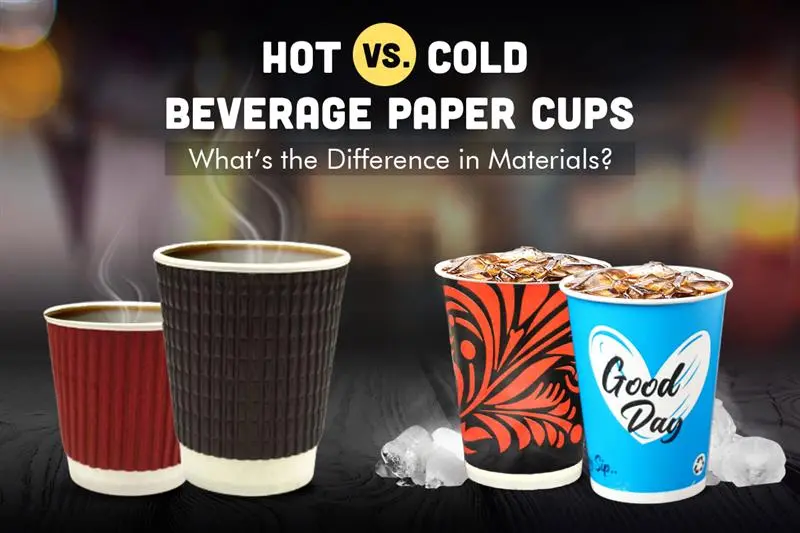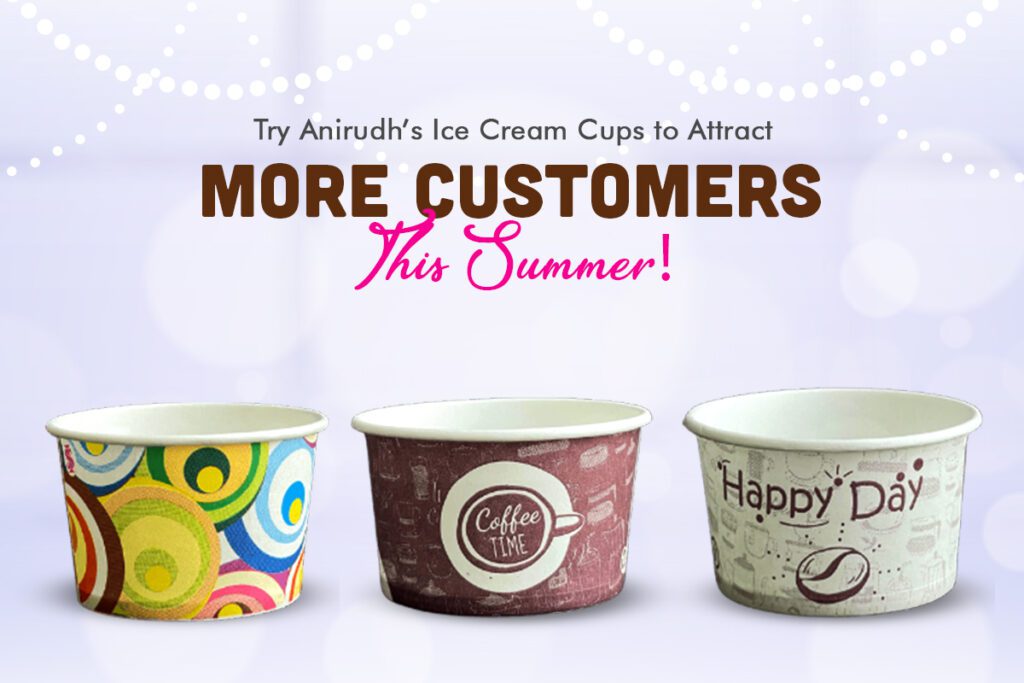Customer experience is vital in the food industry, and something as simple as cups to offer the drinks can make or break that experience. From stylish cold cups to well-insulated hot cups, the variety is endless. Your choice will create an improved customer experience that will demonstrate your business identity to the world.
You must now decide between hot drink and cold drink cups for your beverage needs. The following information explains the distinction between hot beverage paper cups and cold drink cups and provides selection guidance.
Hot Drinks Paper Cups
Hot drink paper cups maintain their entire composition when exposed to heat ranges and serve beverages like coffee, hot chocolate, and tea. A hot cup exhibits the following features:
- Insulation—Hot beverage cups contain a thin polyethylene lining that also stops leaks, providing additional insulation. The polyethylene lining inside hot drink paper cups lets the cup hold hot liquids without any liquid passing through the paper.
- Double-wall construction—The double-wall structure of hot paper cups provides heavy insulation, keeping containers safe to touch even when containing hot beverages.
- Customization option—Hot paper cups can be customized, and you can get custom printed paper cups for your business. You can print branding, logos, and promotional messages to enhance your cafe’s or restaurant’s visibility.
- Biodegradable option—Many hot drink paper cups also come in eco-friendly alternatives, such as plant-based or compostable coatings, which decompose naturally, contributing to a greener planet.
Cold Beverages Paper Cups
Unlike plastic cups, cold beverage paper cups are made from plant-based materials and are designed for iced coffee, juices, smoothies, and soda. Some of the characteristics of a cold cup are
- Material composition—Most cold beverage cups are made of renewable plant-based materials, like PLA, derived from sugarcane or cornstarch. They contain petroleum ingredients that create plastic-free alternatives to traditional cups.
- Clear design—Cold cups have a clear design, as transparent plastic-like material enables customers to view their beverages without obstruction. Juice or smoothie bar businesses heavily depend on color aesthetics to attract customers, so they need to choose transparent drinking cups.
- Cold resistance—Compostable cold cups resist cold temperatures and condensation, unlike paper cups for hot liquids. They keep their structure, so there are no leaks or mushy sides, and your drink stays perfect.
- Compostable lining—Hot drink paper cups have a plastic lining, and cold cups have a biodegradable lining, allowing them to break down in composting environments, making them perfect for eco-friendly businesses.
Hot vs. Cold Paper Cups—Material Composition
The material determines the cup’s suitability for hot or cold beverages. Let’s understand the same for paper cups:
- Hot cups
The manufacturing involves stiff paper, offering effective insulation to prevent heat from escaping.
- Cold cups
The manufacturing uses thin paper with a wax layer coating to improve insulation and prevent it from leaking due to moisture.
What to Consider When Choosing the Cup?
Listed below are some factors to help you make the proper selection:
-
Drink Type
When choosing between a hot and a cold cup, the most essential factor is the drink you want to serve. Hot beverages require insulated cups, whereas cold beverages need cups designed with cold and wax-coated materials.
-
Environmental Protection
Using sustainable materials for beverage containers should always consist of biodegradable and compostable products that break down rapidly to decrease waste accumulation.
-
Cost
Check the cost of each cup. Hot cups are expensive because they are made of thick materials, while cold cups are generally cheap. Printed paper cups will incur an extra cost when printing the brand or logo. Always consider the volume and budget while selecting the cups.
Reasons Not to Choose Cold Cups for Hot Drinks
The cost of cold beverage cups is lower than hot beverage cups; however, these cups should never be used for serving hot drinks because of certain drawbacks. Here are some:
- High-temperature liquids can deteriorate cold cups because of their heat, which results in leakages and product spillages.
- If served in a cold beverage cup, hot drinks can cause burns as the cup won’t handle high temperatures.
- Even if the cup doesn’t melt, hot drinks may taste different if served in a cold beverage cup, as they won’t retain the heat.
- Serving hot beverages in a disposable cup designed for non-hot beverages may consume tiny particles of the cup’s melted substance.
Final Thoughts
Making sustainable decisions requires understanding the material differences between hot and cold beverage paper cups. Although they both have the same primary purpose of retaining your drink, they are designed for somewhat distinct conditions. While cold cups are made to withstand condensation and preserve structural integrity, hot cups depend on heat-resistant linings to stop leaks and shield your hands.
Selecting the appropriate kind promotes better environmental and waste management practices, in addition to making drinking more enjoyable.




